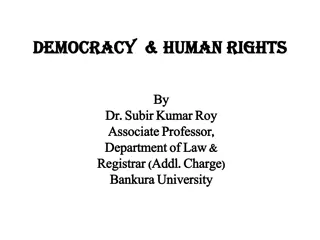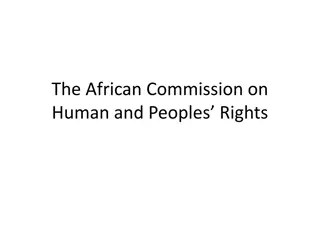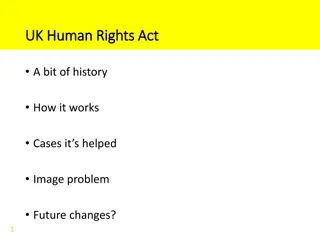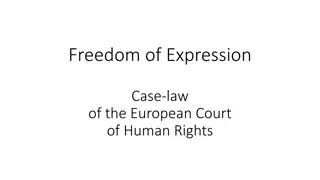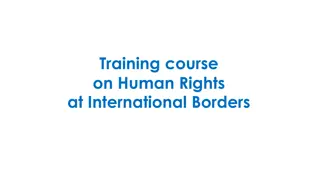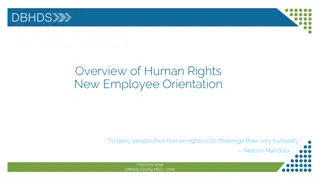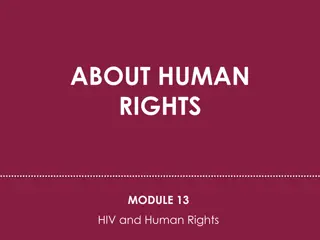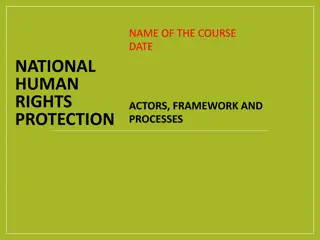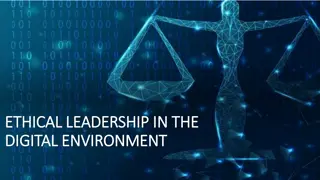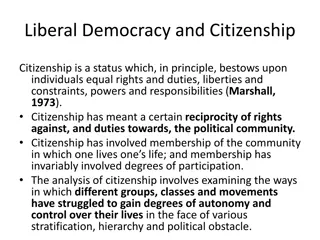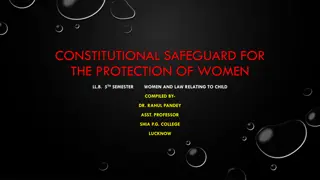Business and Human Rights in the Digital Environment: Key Principles and Action Plans
This content discusses the importance of business and human rights in the digital environment, focusing on pillars such as the state's duty to protect, corporate responsibility to respect, and national action plans. The principles under these pillars emphasize the need for states to prevent human rights abuses by third parties and for businesses to avoid infringing on human rights. Key priority issues like privacy and free expression are highlighted, along with best practices and weaknesses in implementing national action plans.
Download Presentation

Please find below an Image/Link to download the presentation.
The content on the website is provided AS IS for your information and personal use only. It may not be sold, licensed, or shared on other websites without obtaining consent from the author. Download presentation by click this link. If you encounter any issues during the download, it is possible that the publisher has removed the file from their server.
E N D
Presentation Transcript
Business and Human Rights in the Digital Environment GLOBAL PARTNERS DIGITAL
Webinars 1. Introduction to Business and Human Rights (BHR) 2. BHR in the Digital Environment 3. Key Priority Issues: Privacy 4. Key Priority Issues: Free Expression
Pillar 1: State duty to protect The foundational principles under pillar one say that states: Must protect against human rights abuses by third parties (including business enterprises). Should set out clearly the expectation that business enterprises domiciled in their territory and/or jurisdiction respect human rights across their operations
Pillar 1: State duty to protect The operational' principles under pillar one say that states: General state regulatory and policy functions (Guiding Principle 3) The state-business nexus (Guiding Principles 4, 5 and 6) Ensuring policy coherence (Guiding Principles 8, 9 and 10) Supporting business respect for human rights in conflict-affected areas (Guiding Principle 7).
Pillar 1: State duty to protect NATIONAL ACTION PLANS: 1. Embedded in government 2. Relevant stakeholders 3. National Baseline Assessment 4. 3 Pillars 5. Transparent 6. Review Process
Pillar 1: State duty to protect NATIONAL ACTION PLANS: Good practices Weaknesses Include various government entities Some form of consultation with stakeholders Follow-up and implementation actions Disempowered or at-risk stakeholders Lack of transparency in the drafting period Usually there is a lack of National Baseline
Pillar 2: The Corporate Responsibility to Respect 3 As 1.Avoid infringing on human rights 2.Address any adverse human rights impacts 3.Applies to all businesses of all sizes in all situations
Pillar 2: The Corporate Responsibility to Respect Know and Show 1.Policy Commitment 2.Human Rights Due Diligence 3.Grievance Mechanism
Pillar 2: The Corporate Responsibility to Respect Due Diligence 1.Human Rights Impact Assessment 2.Integrating and acting upon findings 3.Tracking and monitoring responses 4.Communicating and reporting
Pillar 3: Remedies Judicial mechanisms State Non-judicial mechanisms State and non-state
Pillar 3: Remedies Non Judicial Mechanisms: State-based non-judicial mechanisms Example OECD and NHRIs Non-state-based, non-judicial mechanisms legitimate, accessible, predictable, equitable, transparent, rights-compatible, a source of continuous learning and engagement and dialogue-based
Other International Standards and Mechanisms Other Voluntary standards: UN Global Compact The Voluntary Principles on Security and Human Rights and The Global Network Initiative
Next Webinar 2 Business and Human Rights in the digital environment. Webinar 3 Key Priority Issues: Privacy Webinar 4 Key Priority Issues: Freedom of Expression











